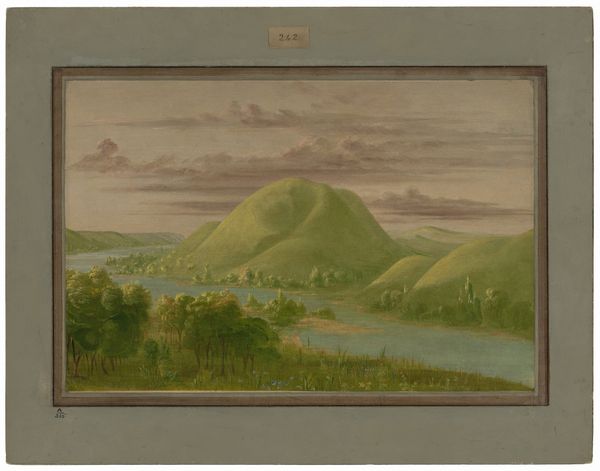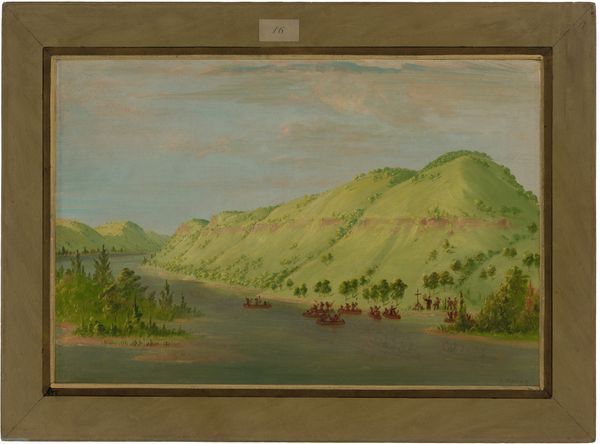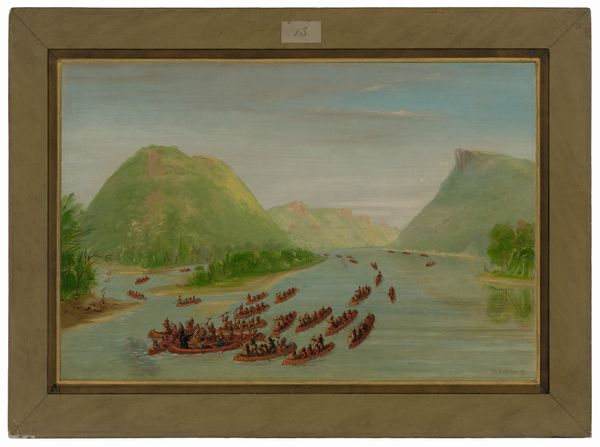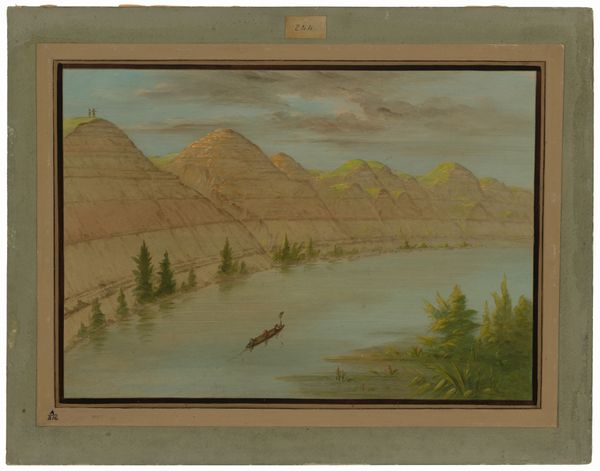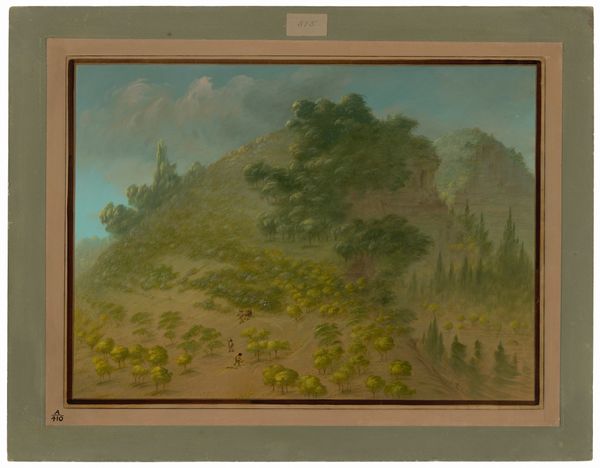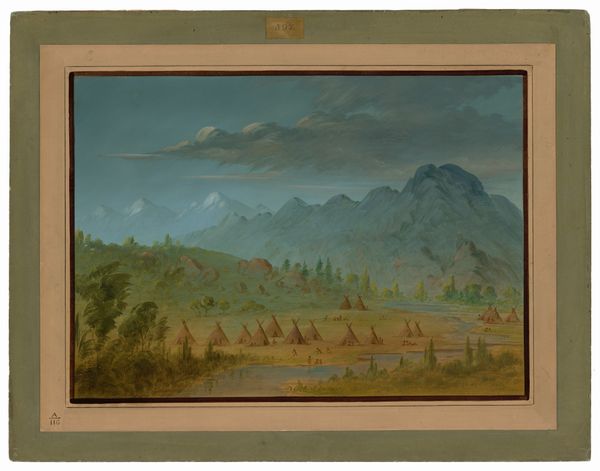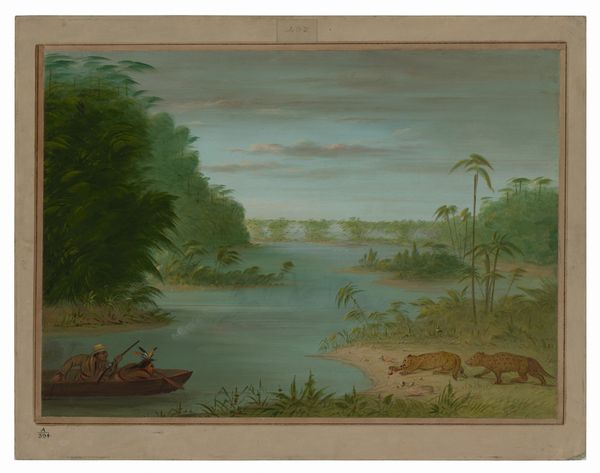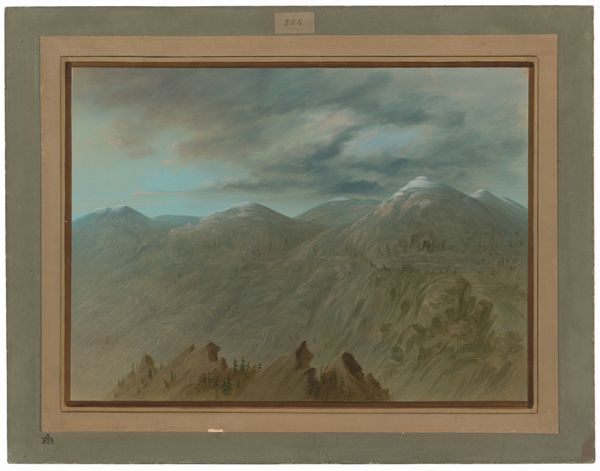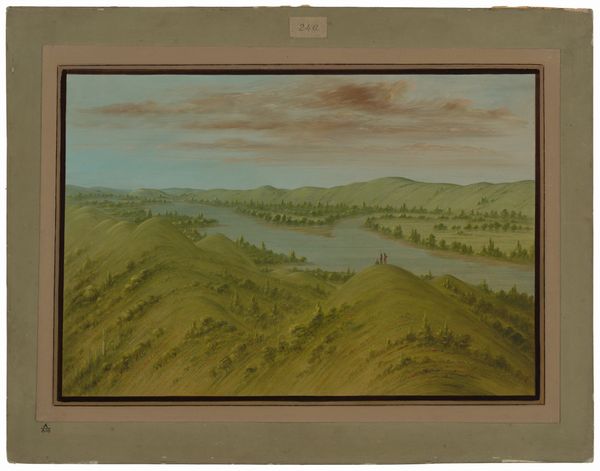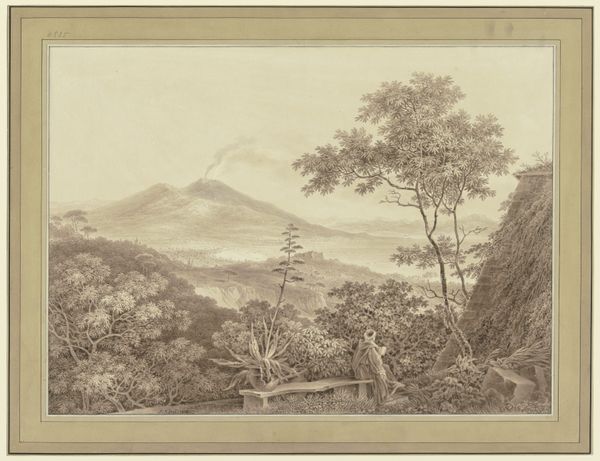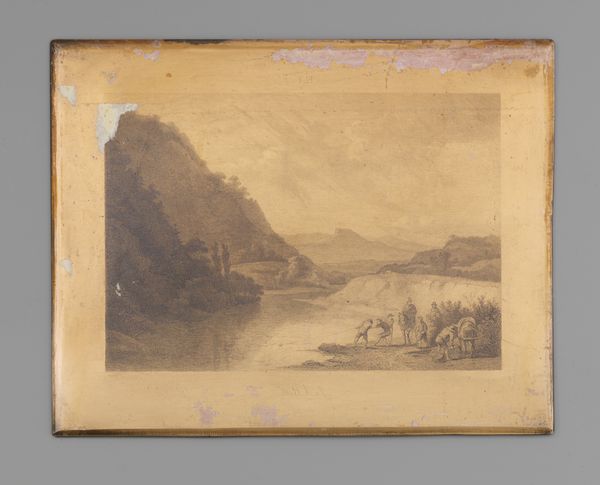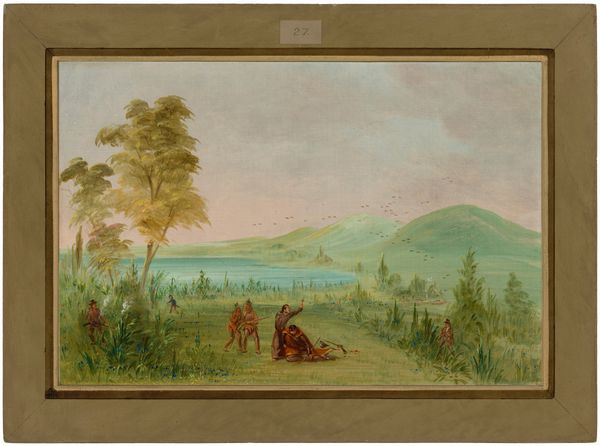
painting, watercolor
#
water colours
#
painting
#
landscape
#
watercolor
#
hudson-river-school
#
watercolor
#
realism
Dimensions: overall: 38 x 59 cm (14 15/16 x 23 1/4 in.)
Copyright: National Gallery of Art: CC0 1.0
Editor: Here we have George Catlin’s watercolor, *View of “Pike’s Tent,”* dating from the 1860s. There's this prominent, almost imposing, green hill dominating the scene and reflecting off the water... What is your read on this piece? Curator: This work invites us to consider landscape painting as a site of power dynamics. Catlin painted extensively throughout the Americas, often depicting Indigenous peoples. How do we reconcile his role as a chronicler of these cultures with the history of westward expansion and its devastating impact? Editor: So, are you saying it’s impossible to separate this idyllic image from its historical context of dispossession? Curator: Precisely. Whose gaze is being privileged here? "Pike's Tent," most likely references Zebulon Pike, an explorer. This seemingly innocent landscape bears witness to a complex history of encounter, where land is both a subject of aesthetic appreciation and a contested territory. What does it mean to frame a landscape in this way? Who gets to define the narrative? Editor: That makes me see the landscape in a different light - it's not just a pretty picture. It forces a recognition that representations of nature can also reflect ideology. Curator: Absolutely. Catlin was trying to preserve images, but from a specific perspective influenced by his time. Exploring this artwork’s relationship to the narratives surrounding Manifest Destiny challenges us to think critically about how art can be implicated in broader socio-political agendas. Editor: That’s such a powerful perspective, I didn’t realize the layers beneath this seemingly simple image. Curator: Thinking intersectionally can really change the way we engage with even the most traditional genres.
Comments
No comments
Be the first to comment and join the conversation on the ultimate creative platform.
